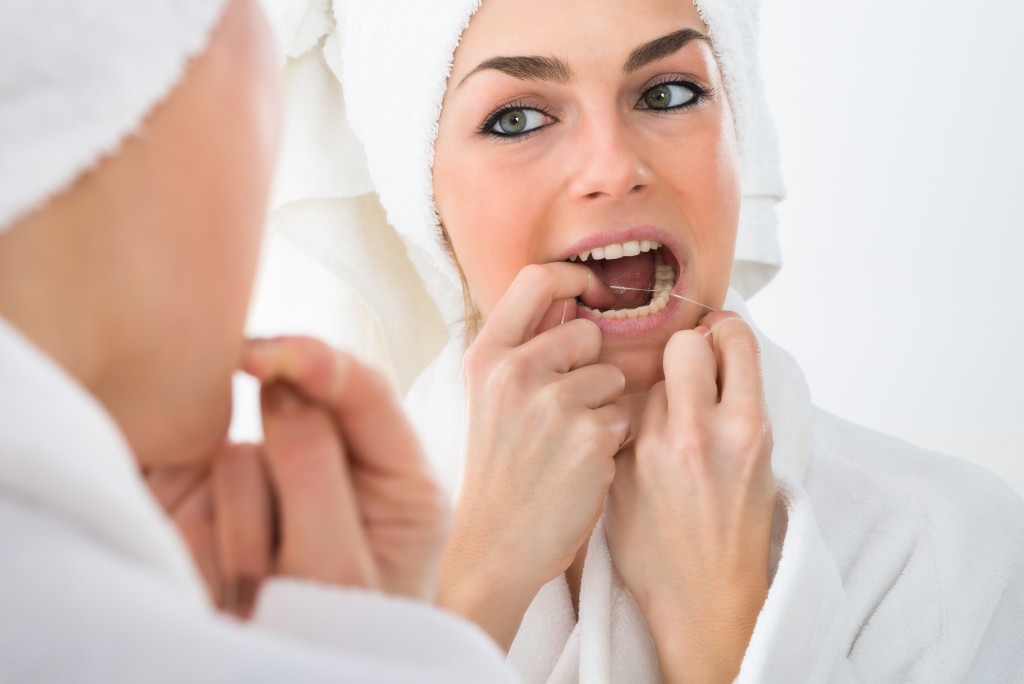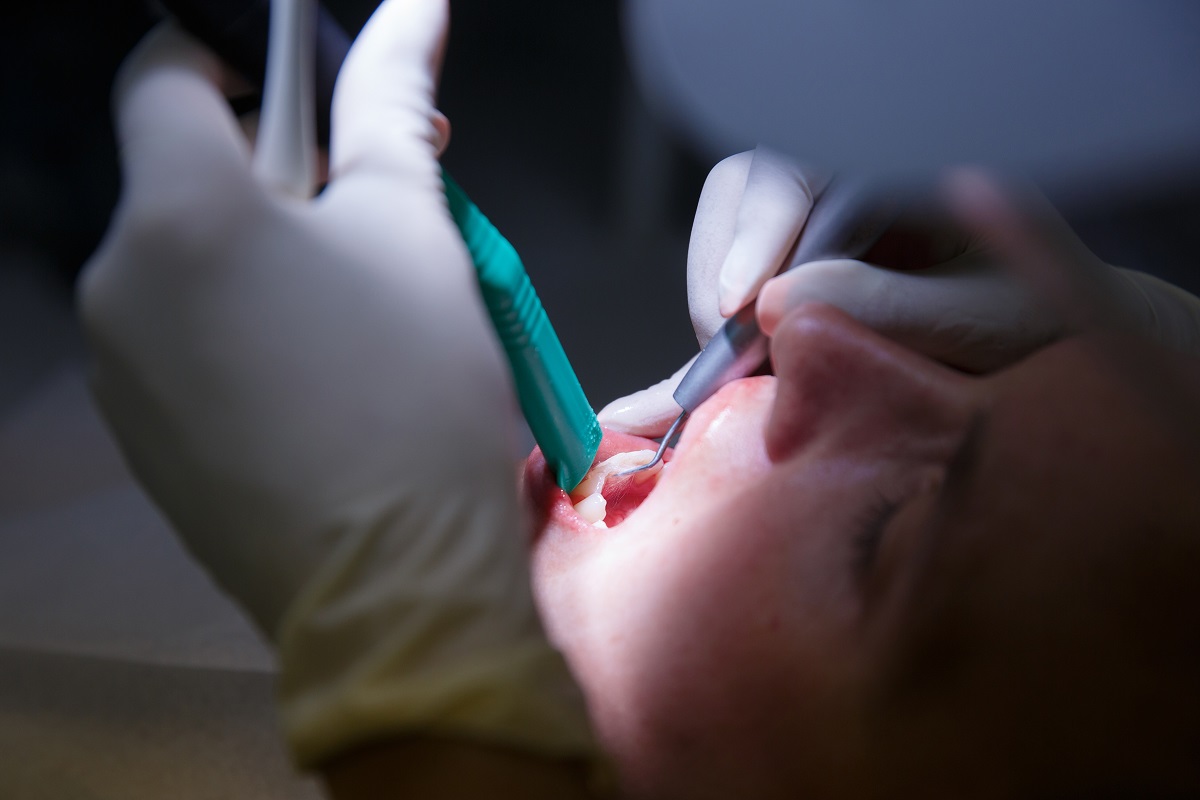Disclaimer: This website provides health information for educational purposes only and is not a substitute for professional medical advice, diagnosis, or treatment. Always seek the guidance of a qualified healthcare provider with any questions you may have.
- Periodontal disease can cause gum pain and other serious oral health problems.
- Good oral hygiene is crucial for managing pain from periodontal disease.
- Regular dental visits, warm saltwater rinses, and cold compresses can help alleviate discomfort.
- Eating a balanced diet with nutrient-dense foods supports gum health and promotes healing.
- Consider sedation dentistry for a comfortable experience during necessary treatment.
Dealing with pain from periodontal disease can be challenging and uncomfortable. Periodontal disease, also known as gum disease, is a prevalent condition that impacts the gums and the tissues surrounding them. Left untreated, it can lead to tooth loss and other serious oral health problems. This guide will provide five tips to help manage the pain caused by periodontal disease and improve your oral health.
1. Practice Good Oral Hygiene
Maintaining good oral hygiene is crucial for managing pain from periodontal disease. By practicing good oral hygiene, you can minimize the pain associated with gum disease and prevent further progression.
Here are some tips on how to practice good oral hygiene:
Brush Properly
When brushing your teeth, it’s important to use the proper technique. Hold your toothbrush at a 45-degree angle and gently brush in circular motions. This helps to effectively remove plaque and bacteria from all surfaces of your teeth.
It is important to remember to brush your tongue as well, as it can harbor bacteria that may contribute to unpleasant breath. Replace your toothbrush every three to four months or when the bristles become frayed.
Floss Daily

Flossing is just as important as brushing for maintaining good oral hygiene. Regular use of dental floss aids in the removal of plaque and food particles that get trapped between your teeth, areas that are inaccessible to a toothbrush. Use a gentle back-and-forth motion to clean each side of your tooth, and be sure to floss between every tooth.
Consider using a water flosser or interdental brushes if traditional flossing is difficult. These tools can be helpful for those with limited dexterity or braces.
Use Mouthwash
Mouthwash can be a valuable addition to your oral hygiene routine. Not only does it freshen your breath, but it also helps to reduce bacteria in your mouth. Look for a mouthwash with antimicrobial properties to kill harmful bacteria effectively.
Be sure to use mouthwash after brushing and flossing, as it can help rinse any remaining debris. However, do not rely on mouthwash alone, as it cannot replace proper brushing and flossing techniques.
Visit Your Dentist Regularly
In addition to at-home oral hygiene practices, visiting your dentist regularly for professional cleanings and check-ups is important. Your dentist can identify any potential issues early on and provide treatment to prevent gum disease from progressing.
They may also recommend additional measures such as deep cleaning or periodontal therapy. Regular visits to the dentist are crucial for maintaining good oral health and preventing further pain and discomfort from periodontal disease.
2. Use Warm Saltwater Rinse
A warm salt water rinse can temporarily relieve gum pain caused by periodontal disease. Saltwater rinses help reduce inflammation, soothe irritated gums, and promote healing.
Repeat this rinse twice to three times daily or as needed to alleviate discomfort. However, it’s important to note that saltwater rinses are not a substitute for professional dental care. Consult your dentist to determine the best treatment plan for managing your periodontal disease.
3. Apply Cold Compress
If you experience swelling or pain in your gums due to periodontal disease, applying a cold compress can provide relief. Wrap a bag of ice or a cold pack in a thin cloth and hold it against the affected area for about 15 minutes. The cold temperature helps reduce inflammation and numb the pain.
Avoid applying ice directly to your gums, which can cause additional discomfort or damage. Use the cold compress for short periods, taking breaks in between. If the pain persists or worsens, consult your dentist for a comprehensive evaluation and appropriate treatment.
4. Eat a Balanced Diet

A healthy diet is vital in managing periodontal disease and reducing associated pain. Include foods rich in vitamins and minerals, particularly vitamin C and calcium, to support gum health and promote healing. Citrus fruits, leafy greens, dairy products, and nuts are excellent sources of these essential nutrients.
Limit your sugary and acidic foods intake, as they can exacerbate gum inflammation and contribute to dental decay. Opt for nutrient-dense, whole foods that support your overall health and oral well-being. By nourishing your body with a balanced diet, you can enhance your body’s natural ability to fight off infections and reduce pain caused by periodontal disease.
5. Consider Sedation Dentistry
If your periodontal disease is so extreme that it requires surgical intervention, consider professional sedation dentistry for a comfortable experience. Sedation dentistry is a safe and effective way to manage pain and anxiety during dental procedures. Sedation dentistry involves using medication to help you relax and remain calm during dental procedures.
Various degrees of sedation can be provided, ranging from mild sedation (awake but calm) to general anesthesia (unconscious). Discuss your concerns with your dentist, who can assess your needs and determine if sedation dentistry suits you. This approach can help alleviate anxiety and ensure a comfortable experience while receiving the necessary treatment for your periodontal disease.
Final Words
Managing pain from periodontal disease requires consistent oral hygiene practices, such as brushing and flossing regularly. Warm salt water rinses and cold compresses can provide temporary relief, while a balanced diet supports gum health. Additionally, considering sedation dentistry can help alleviate anxiety during treatment. Consult your dentist for a personalized treatment plan tailored to your needs. With proper management and professional care, you can effectively deal with pain caused by periodontal disease and improve your overall oral health.

